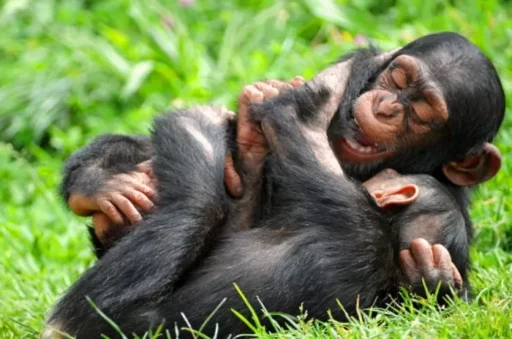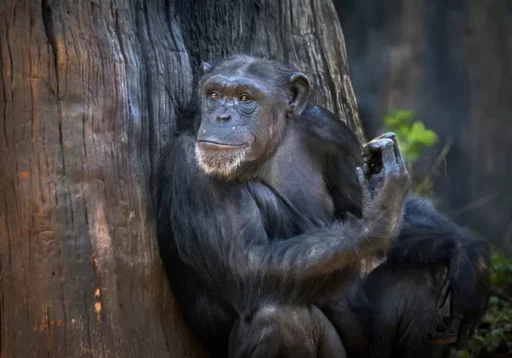Chimpanzees' banging sounds were thought to be meaningless… "There was a reason for everything"
A quirky scientist and his colleagues have published research findings after closely observing the loud sounds made by chimpanzees hitting trees in tropical rainforests for several decades.
On the 9th (local time), various local media, including the American popular science magazine New Scientist, reported that a special fact was discovered in the behavior of chimpanzees, who drum on trees rhythmically like humans.
An international research team, including the University of St. Andrews in the UK, presented their findings in the international journal Current Biology, detailing an analysis of 'rhythm patterns' from 11 species of wild chimpanzees distributed across various regions of Africa.
After decades of observation, the researchers identified a total of 371 different rhythm patterns used by chimpanzees.

According to the study's results, chimpanzees send signals in a predetermined rhythm when they want to convey specific information to their peers.
They primarily made sounds when they needed protection or assistance from their companions, such as when resting on tree roots or moving to another location.
In fact, the sounds they produced with their hands, feet, and sometimes bodies could be heard from over 1 km away.
To send sounds far into the dense jungle, chimpanzees would choose trees that amplified the sounds.
Researchers have known for decades that chimpanzees drum, but two new studies show that the animals drum to a distinct beat—which varies across their societies.
Researchers have known for decades that chimpanzees drum, but two new studies show that the animals drum to a distinct beat—which varies across their societies.
The research team analyzed this as a long-distance communication method for chimpanzees. They concluded that the sounds made by chimpanzees are not random; instead, they convey meaning through rhythm, just as humans do in communication.
Vesta Eleuteri from the University of Vienna, who participated in the study, stated, "They do not play randomly; they play rhythmically, using isochrony, a typical rhythm observed in musical cultures."
She added, "Chimpanzees living on opposite sides of Africa struck trees with different rhythms,” noting that “Eastern chimpanzees used faster and more frequent rhythms."
Catherine Hobaiter, a professor of psychology at the University of St. Andrews, explained, "Music is a crucial element that defines humanity, but it is unclear when music began. Considering that chimpanzees share a sense of rhythm, which is central to human music, it is possible that this ability originated from a common ancestor of humans and chimpanzees."

Image source: Reference photo for understanding the article / gettyimagesbank


